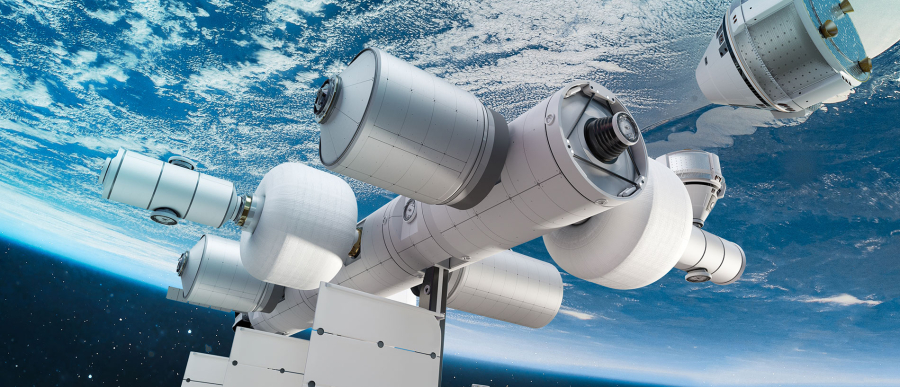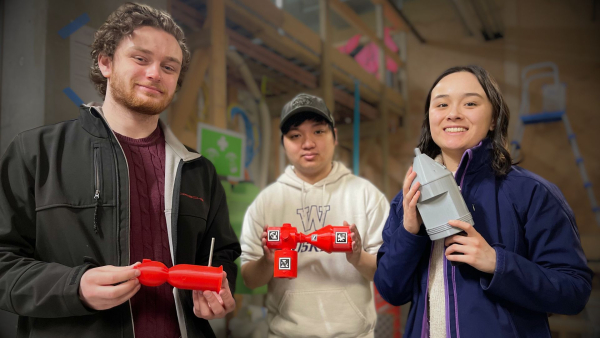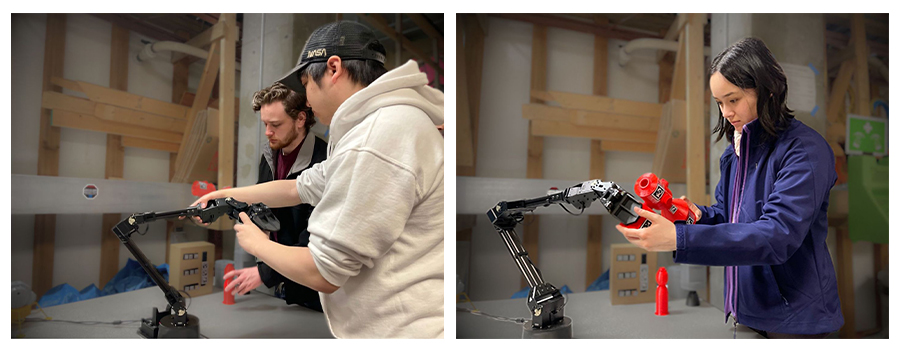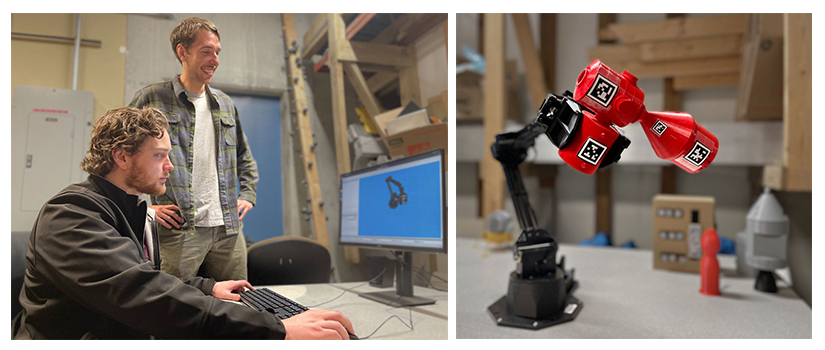Amy Sprague
May 13, 2024

A&A research with April Tags could make docking of the future safer and more precise. Photo courtesy of Blue Origin.
A tool for precise remote rendezvous
Docking or approaching another spacecraft in orbit is an incredibly challenging task. With both spacecraft traveling at approximately 16,000 miles per hour, even the slightest error in relative position and speed could lead to a catastrophic collision in space. However, the real-time control and monitoring required for such maneuvers become even more difficult due to the vast distances between the mission control on Earth and the remote rendezvous point.
To overcome these challenges, A&A's Nick Andrews is spearheading groundbreaking research at the Nonlinear Dynamics & Controls Lab for Blue Origin under professor and chair Kristi Morgansen. Andrews explains, "Our ultimate objective is to develop a control system capable of utilizing camera sensing for visual tracking, enabling two spacecraft in lower earth orbit to locate each other and autonomously dock."
Andrews' research team is studying the functionality of "April Tags,'' a type of visual fiducial markers that look a lot like QR codes. These tags are specifically designed to enable the calculation of the position and orientation of objects in space and are even visible in low light, making them particularly useful for space applications.
Harry Furey-Soper, another A&A student involved in the project, highlights the importance of April Tags in space orientation. He says, "In space, you can't rely on the ground or horizon for orientation, and determining the distance between objects becomes challenging. Being able to measure and identify relative navigation and positioning on board using April Tags is an invaluable tool."

Harry Furey-Soper, Joshua Cheng and Kaylee Hudson with the 3D-printed spacecraft models used for April Tags experimentation.
A&A undergraduate work sets the stage
Four undergraduate researchers laid the foundation for this project. Furey-Soper and Joshua Cheng, who are now A&A graduate students, played a crucial initial role by 3D-printing spacecraft models and setting up mounted cameras and April Tags for experimentation. Their efforts created a tabletop testbed equipped with robotic arms, which served as the centerpiece of their Junior Capstone project.
Then, Kaylee Hudson, an electrical and computer engineering student, collaborated with Furey-Soper on a Washington NASA Space Grant Summer Undergraduate Research Program (SURP) project in 2022. Building on this work, Osvaldo Aldaz continued the project's development as his 2023 SURP project.
Creating table-top simulations
Andrews is leading the analytical phase, while the remaining team members focus on demonstrating the results with hardware. The initial stage of their work involves recreating the outcomes through a tabletop experiment. They modified two robotic arms to each hold and manipulate 3D-printed spacecraft models, guided by cameras focusing on the April Tags to dock the models together. This setup replicates an in-space docking scenario, providing a representation of an encounter in space. Through this setup, the researchers can validate algorithms and assess results on a smaller scale.
Using MATLAB, they analyzed the effectiveness of April Tags under various distances and orientations, discovering that the tags' efficacy decreased as the distance and orientation angle increased. However, they also found that while a larger tag can sometimes make the system more effective, it can also make the system less robust because it takes up a significant amount of surface area that may be better utilized with a series of smaller diverse tag sizes. They will be testing the effect of curvature because data only exists for flat tags, but in-space vehicles are cylindrical which may affect their performance with such precise maneuvers.

Furey-Soper and Cheng (left) and Hudson (right) set up the table-top robotic arm that replicates an in-space docking scenario.
The value for Blue Origin and students
The ultimate objective is to deliver valuable data to Blue Origin from these demonstrations and work with the company on iterative research that tests real usage of April Tags and ensures they are not intruding on any constraints. The team will have the opportunity to compare actual flight data from a future Blue Origin launch with their analytical and table-top experiment results.
Morgansen emphasizes the value of this project, "For our students, this research has honed their hands-on experience and analytical skills and contributed to the forefront of space exploration. By collaborating with Blue Origin, we are revolutionizing space missions, developing a control system that enables autonomous docking and paving the way for a safer and more efficient future in space."

The robotic arm is ready for testing while Furey-Soper and Nick Andrews demonstrate the controls.